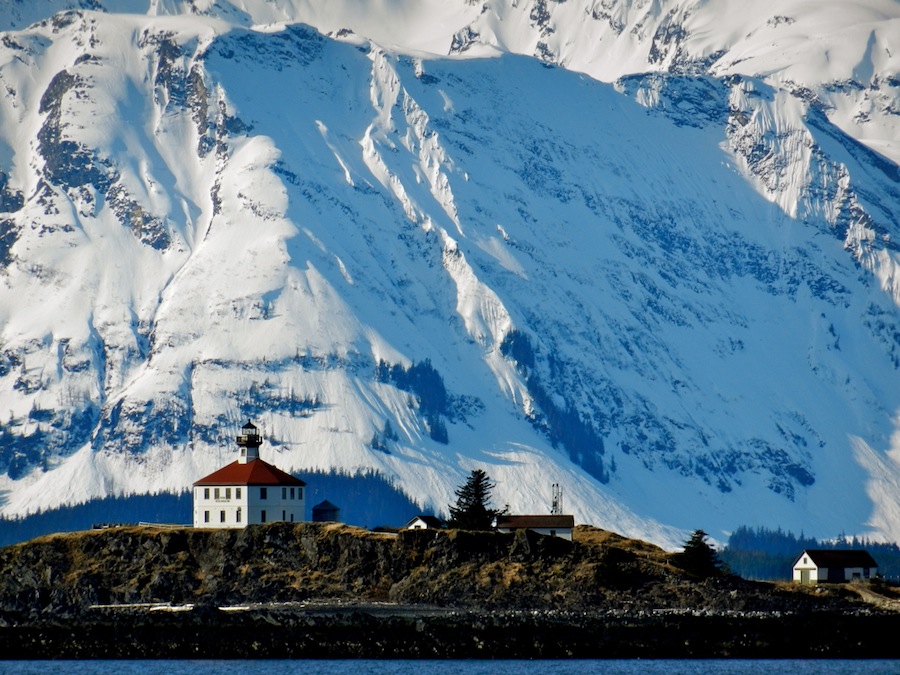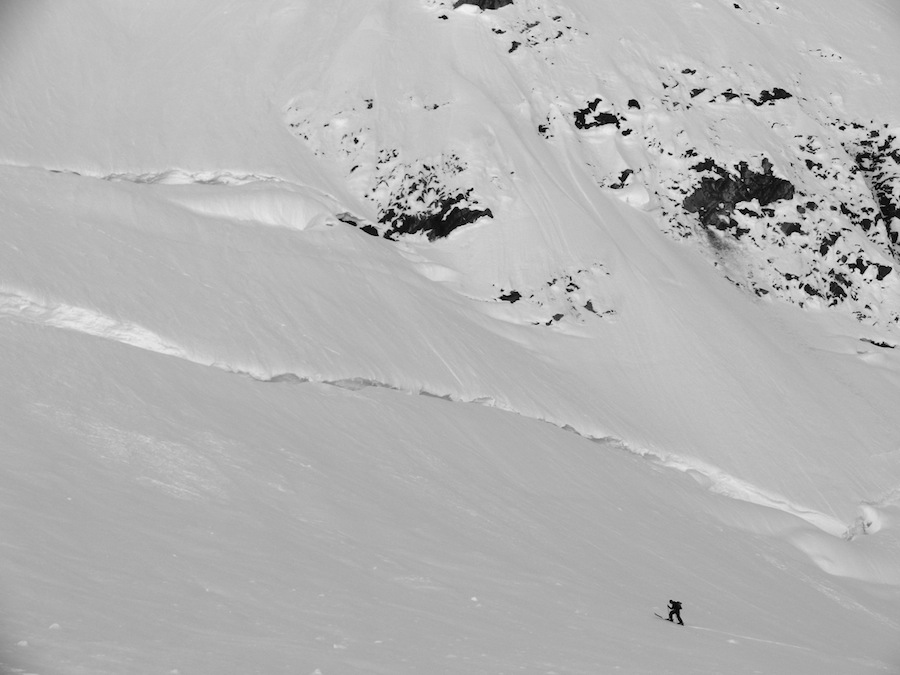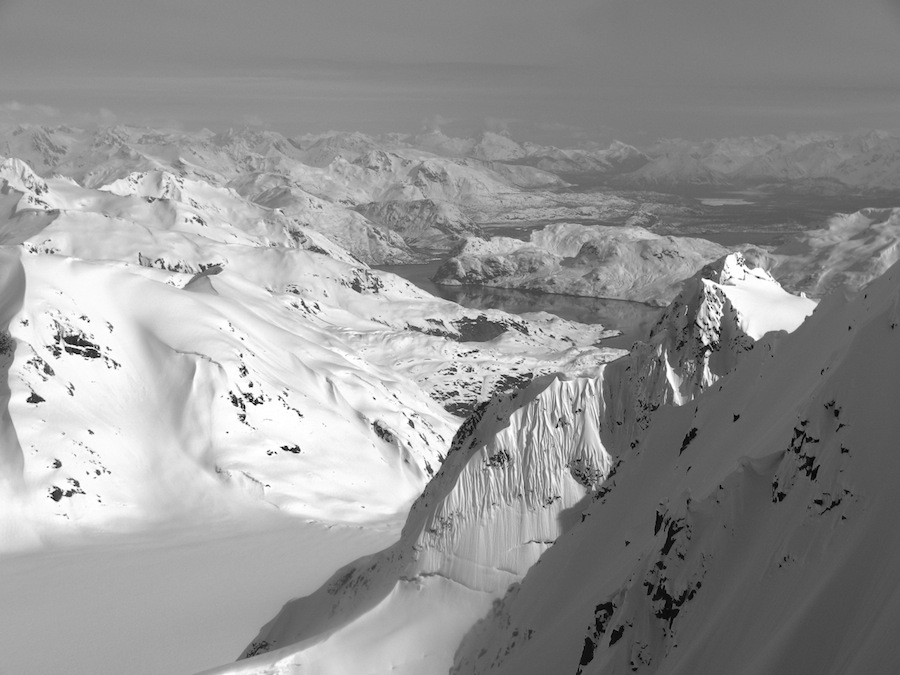Matador Ambassador / champion freeskier Drew Tabke and crew get unreal backcountry access in Alaska.
IN LATE APRIL I went to Alaska with two of my good friends from Chile — Chopo Diaz and Claudio Vicuña. Our plan was to be dropped off by a ski plane on a glacier near Glacier Bay National Park.
Once on the glacier we’d make camp and backcountry ski for about 10 days. It was the best of both worlds: mechanized assistance to get us to an incredible mountain environment, and the isolation, freedom of choice, and independence offered by camping and ski touring.



Intermission




